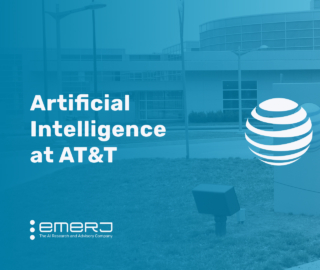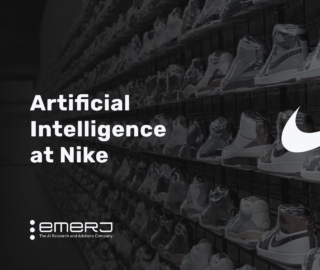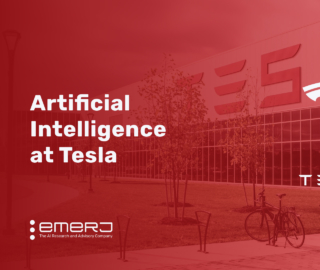
Dick and Mac McDonald opened the first McDonald’s restaurant in San Bernardino, California in 1940. By the end of the decade, the restaurant added its now-famous French fries. Ray Kroc joined the growing organization in 1954, purchased it in 1961, and served as its CEO into the early 1970s. Over the next decades, the restaurant chain grew, adding its drive-thru concept, Hamburger University, and iconic menu items like its Filet-O-Fish, Big Mac, and Quarter Pounder sandwiches.
Today, McDonald’s is the world’s second-largest restaurant company by revenue and its largest fast-food restaurant chain with more than 39,000 locations in 119 countries. As of January 2022, McDonald’s trades on the NYSE with a market cap of approximately $200 billion. For the fiscal year ended December 31, 2021, McDonald’s reported total revenues of over $22 billion.
McDonald’s created McD Tech Labs after its 2019 acquisition of Apprente, a voice technology firm, which in turn followed its earlier acquisition of Dynamic Yield, a Tel Aviv-based firm that specialized in personalization and decision logic technology.
In 2020, McDonald’s announced its Accelerating the Arches growth strategy, which includes a “double down on the 3 D’s: Digital, Delivery and Drive-Thru,” and the integration of these newly acquired AI technologies.
In this article, we’ll look at how McDonald’s has explored AI applications for its business and industry through two unique use-cases:
- Automated Drive-Thrus — McDonald’s acquired natural language processing and machine learning expertise through its 2019 acquisition of Apprente, which the chain has applied to its automated order-taking initiatives.
- Order Prediction — McDonald’s uses machine learning-based decision technology to predict what menu offerings are most likely to drive sales in its drive-thru business.
We will begin by examining how McDonald’s uses natural language processing and machine learning technology to speed its order-taking process as its drive-thru business has become more popular during the pandemic.
Automated Drive-Thrus
Since the introduction of its first drive-thrus in the 1970s, McDonald’s has grown to rely on the model to attract and serve its guests. As of December 2021, McDonald’s offers drive-thru service in some 25,000 locations across the world, including at 95% of all US operations. Valued by consumers for its convenience and flexibility, the drive-thru model has taken on even more importance during the COVID-19 pandemic, representing some 70% of sales in top markets since March 2020.
“Our drive-thru sales across our top six markets continue to stay elevated versus pre-pandemic levels even as dining rooms reopened,” said Chris Kempczinski, the chain’s president and CEO during its Q3 2021 earnings call.
In addition to implementing drive-thru innovations like express pick-up, express drive-thru, and smaller “on-the-go” locations, McDonald’s is also looking to improve on its ordering and payment functions.
The company made its biggest jump into innovating the order and payment components of the drive-thru process by beginning to automate drive-thru order-taking in 2018, and with its 2019 acquisition of Apprente. Later renamed McD Tech Labs, the acquisition enabled McDonald’s to implement and test automated order-taking at several of its US-based restaurants, Kempczinski said in October 2021.
Apprente technology, per a Q3 2019 McDonald’s press release is a “voice-based [platform] for complex, multilingual, multi-accent, and multi-item conversational ordering.” McDonald’s hopes that using the solution’s natural language processing and machine learning capabilities will create a faster, simpler, and more accurate order-taking process at the company’s drive-thrus.
Here Mason Smoot, McDonald’s Chief Restaurant Officer for the US, explains McDonald’s plans for its Automated Order-Taking technology at the Company’s Worldwide Connection 2.0 (WWC) Meeting:
Since 2018, McDonald’s reports that the chain has cut the time it takes to serve drive-thru customers by thirty seconds and claims that this has resulted in increased customer satisfaction. McDonald’s has announced plans to expand its drive-thru “innovations” to more than 10,000 locations worldwide.
Automated order-taking boasts an 85% accuracy rating, Kempczinksi said at the Alliance Bernstein’s Strategic Decisions conference, adding that about 20% of orders have required human intervention.
In its most recent earnings call, the chain reports substantial benefits for both customers and its employees, and has announced plans to continue to scale the technology to more than 14,000 locations across the country.
To help drive that growth, McDonald’s entered into a “strategic relationship” with IBM in Q4 2021 to tap into their expertise in “building AI powered customer care solutions and voice recognition,” Kempczinski continued during the Q3 2021 earnings call. As part of the deal, automated order taking “will continue to be integrated into McDonald’s highly secure technology ecosystem.”
Order Prediction
Digitization is coming to the drive-thru. As we drive around—and go inside—McDonald’s restaurants, we are increasingly met with digital displays, and those displays are growing smarter.
In the United States alone, McDonald’s serves more than 25 million customers daily. In the chain’s top markets, some 70% of sales come through the drive-thru. As part of its Accelerating the Arches effort to make the drive-thru as efficient and convenient as possible for its customers, McDonald’s purchased Dynamic Yield in 2019, planning to leverage its decision technology to add personalization to its drive-thrus and modernize the customer experience.
When McDonald’s added Dynamic Yield’s machine-learning-driven solution to its drive-thrus at select locations in 2018, the tech considered purchases made by other customers when updating the offerings presented on the ordering displays. The technology also updated the digital drive-thru menu displays based on:
- The time of day
- Current order selections
- Current restaurant traffic
- Popularity of menu items
- Weather conditions
Here, at McDonald’s November 2020 Virtual Investor Update, Mason Smoot, McDonald’s Chief Restaurant Officer for the US, explains the company’s vision for its Drive-Thru strategy:
Through the machine-learning technology acquired in the Dynamic Yield transaction, McDonald’s digitized its point-of-sale process at its brick-and-mortar locations with decision technology. After testing the digital displays in several domestic markets in 2018, McDonald’s announced plans to continue its rollout to more US and international locations in 2019.
With Dynamic Yield’s machine-learning-driven decision technology, McDonald’s now offers digital displays that suggest items popular with other customers, or that are frequently purchased in certain weather or during a specific time of day. These digital displays can also suggest faster-to-prepare items to alleviate drive-thru slowdowns.
Rumors first emerged in early 2021 that McDonald’s was considering selling its Dynamic Yield business. Possible reasons included disagreements about $70 million in technology fees that McDonald’s said were not paid by its franchisees.
Later in 2021, in December, McDonald’s announced plans to sell Dynamic Yield to Mastercard. Although Dynamic Yield, with its portfolio of more than 400 global brands, will become part of Mastercard’s digital service strategy, Mastercard, through its President of Data & Services, stated that it plans to “continue working with McDonald’s.”
While McDonald’s does not provide separate financial performance information for its Dynamic Yield business, the company does plan to continue using the technology in its bid to further personalize its customer experience and, at the time of the Dynamic Yield sale, reiterated its plans to “further scale and integrate Dynamic Yield’s capabilities globally and across ordering channels.”







